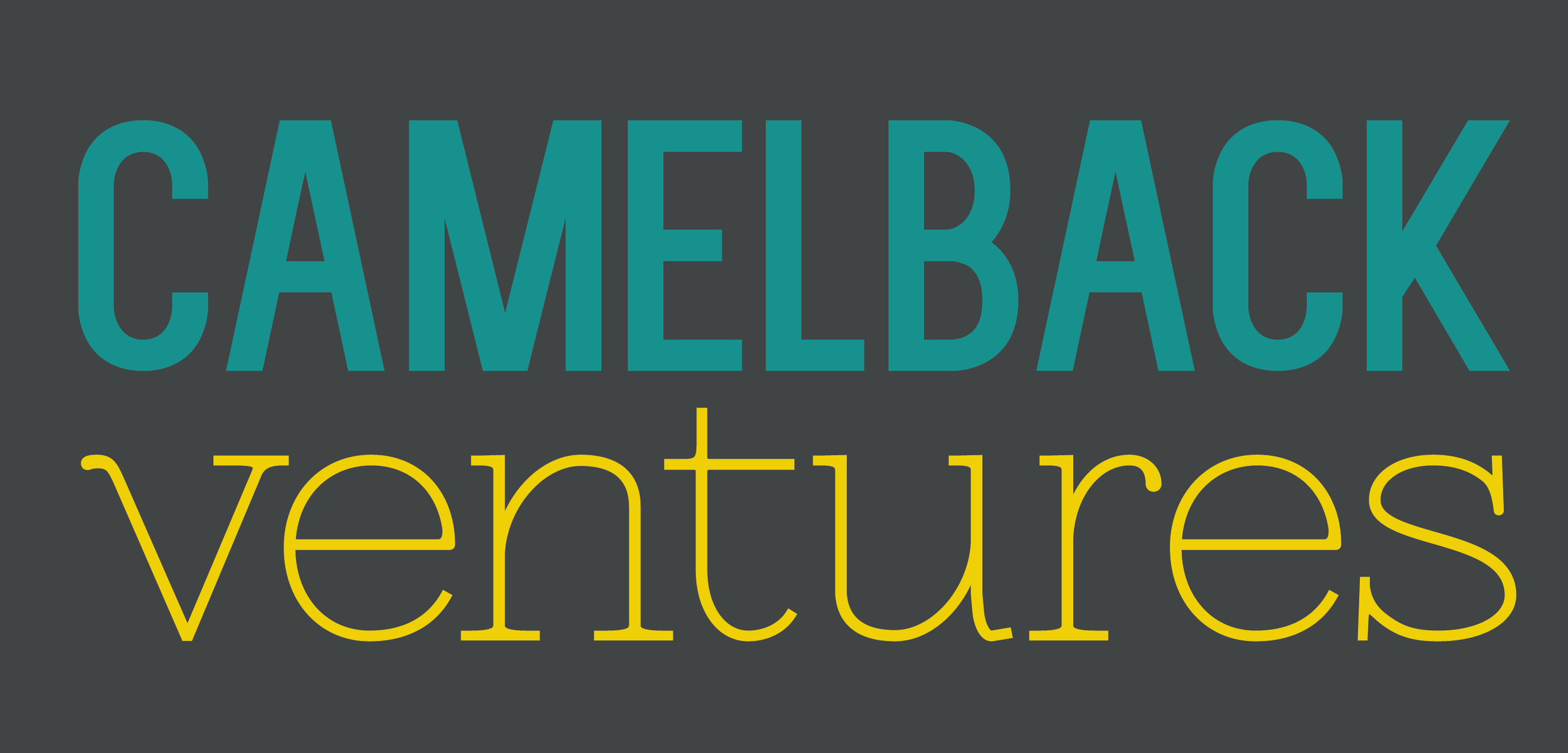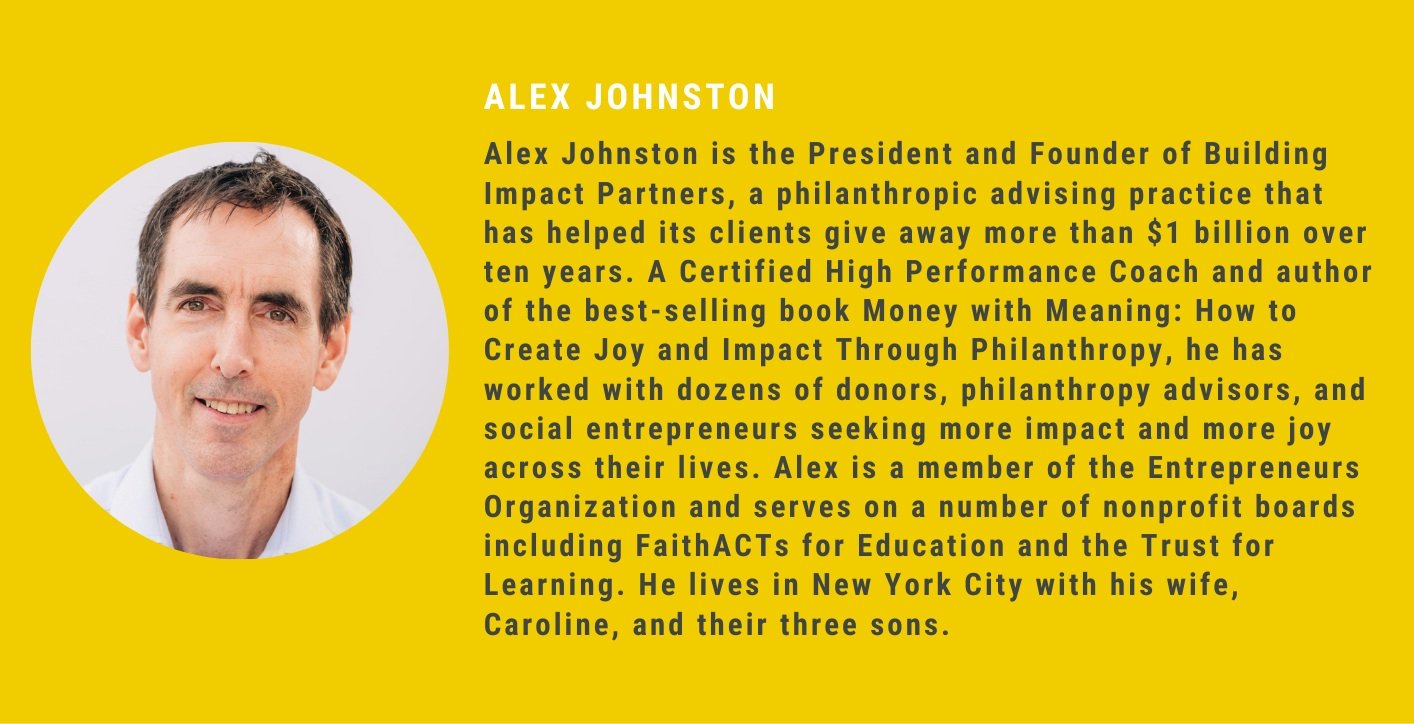Elevating My Psychology In Pursuit of Equity, Impact and Joy Through Philanthropy [Part One]
By: Alex Johnston, President and Founder of Building Impact Partners
Introduction: The Continuous Invitation for Growth
For all of us engaged in allocating resources through philanthropy, whether as donors, advisors or foundation staff it’s common to set our north star as the pursuit of maximum positive impact. It is also common to include an aspiration to advance equity as part of our definition of “maximum positive impact.” Whatever our particular issue area or focus, we don’t want to leave anything on the table when it comes to delivering on this mission. But with over a dozen years as a philanthropy advisor I’ve come to believe that when we drive so hard for maximum impact, even when we’ve done explicit work around concepts of race, identity and power, we risk missing the mark unless we also accept the ongoing invitation to engage in our own journey of learning, growth and deepened connection through giving. As human beings, we are all hard-wired through millions of years of adaptation for a fear-based fight or flight mental operating system. In my experience, it’s especially important to pay more attention to my own wiring when I am involved in philanthropy that’s operating across lines of difference. It’s only when I am able to break out of these default psychological settings that I am able to elevate my perspective and truly see the bigger systems of which I am a part—and to help those I am working with to do the same.
The Intersections of Philanthropy, Personal Development, and Systems Change
I’m a 51-year-old Ivy League-educated white man who has spent my whole career working in the social sector. Perhaps this won’t come as a shocker, but for much of that time, spanning a number of years in affordable housing, education advocacy and then philanthropy, I mostly went straight at the work of strategy, planning and execution with a disciplined focus. Whether as director of operations at a housing authority or as an advocate in a state legislature, or an advisor to donors looking to improve public education, it often felt like my job was to thread an intricate path through tricky ground with opportunities to fail at every turn. So I kept a tight focus on whatever my colleagues and I believed would produce maximum impact and equity without a lot of thought to my own psychology and growth. Not surprisingly, results were mixed! I “got a lot done,” in conventional terms, but as I look back I can now see all kinds of missed opportunities, unexplored dynamics and undeveloped relationships. Despite my positive intentions to advance both impact and equity, without the tools to move past a fear-based state of mind, I couldn’t even see some of the biggest opportunities.
Maybe it’s been my version of a mid-life reset, but over the past half dozen years I’ve been delving deeply at the intersection of personal development, philanthropy and systems change. This journey ultimately led me to distill my own learnings into a book: Money with Meaning: How to Create Joy and Impact Through Philanthropy. In this post I want to share some reflections for those who allocate resources, whether as donors, advisors or foundation staff, on how our psychological perspective and growth connect with our work to advance both impact and equity through philanthropy.
Fair warning: I love a good framework, and the book is full of them. In this post I’ll focus on just two.
Framework 1: The 7 Pillars of Personal Development for Change Agents
This is a tool I use extensively myself, and in my coaching work with donors as well as philanthropy advisors and social entrepreneurs. It’s a way of focusing on distinct domains in our personal growth, while also remaining aware of how they all connect and support us as a whole. I won’t go through each of the pillars here, but for those who are interested there’s lots more in the book and in the digital playbook of videos and worksheets that goes with it.
For the moment, let’s focus on the final two pillars and how they relate to our work to advance equity and impact through philanthropy.
Persistent courage is about taking on the challenge to grow into your full self in a world where so many circumstances and systems are not as they should be—including systems of inequity and injustice from which we ourselves may have been harmed even as we simultaneously received benefits. When exploring my journey as a white person working in philanthropy with a woman of color as a gifted coach, this crystallized for me in the multi-layered question: Do I have permission to heal?
Expanded perspective is about bringing a critical consciousness to the connections between yourself and the larger systems that shape the world around you—it’s also about opening yourself up to the larger whole that is seeking expression through you. If that sounds abstract, to get practical about it: as a white man working in philanthropy, I challenge myself to work continuously to expand my perspective in order to see and to shift how I show up within the systems of race, ethnicity, gender and all the other socially constructed dynamics that influence how power and resources move in philanthropy. This worksheet is one I come back to again and again whenever I’m feeling like I might be falling prey to tunnel vision. I know from my own experience that it’s all too easy for me to just swim in this water without seeing it, and in the process to miss countless opportunities big and small to bend the arc of giving towards justice and to systemic solutions that are grounded in the lived experience of those who are closest to the challenge.
Stay tuned for the second post in this series, where I'll share a second framework I've drawn on to expand my perspective and elevate my vantage point as a philanthropy advisor.
This thought leadership piece and others like it can be found in Camelback Ventures' Giving Compass ‘Racial Equity in Philanthropy' e-magazine collection. Check it out!
_________
The Capital Collaborative by Camelback Ventures works with white funders and social impact investors who want to deepen their individual and organizational commitment to racial and gender equity in philanthropy — but may not know how. You can learn more about how to get involved by submitting an interest form for the Capital Collaborative’s next cohort or signing up for the newsletter.



